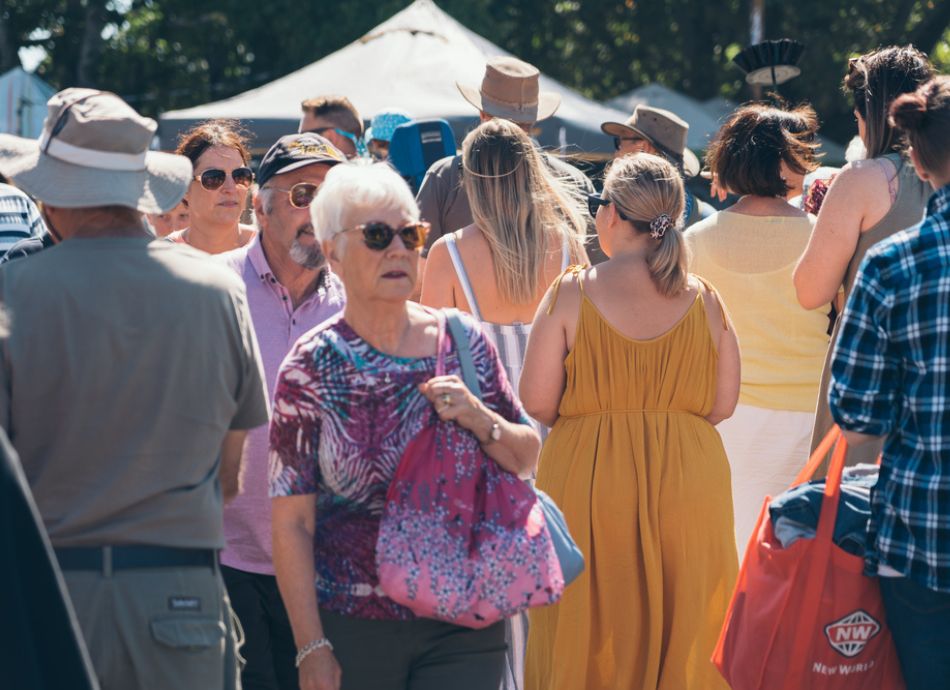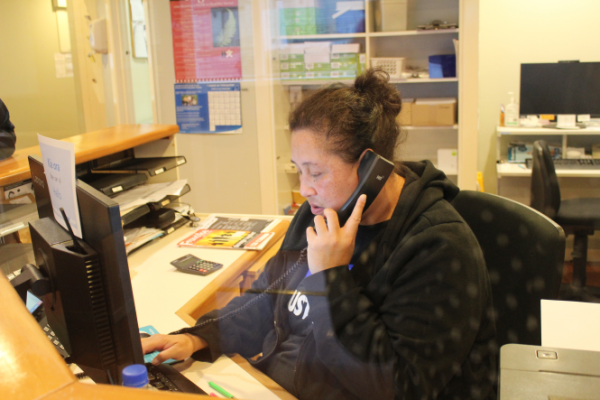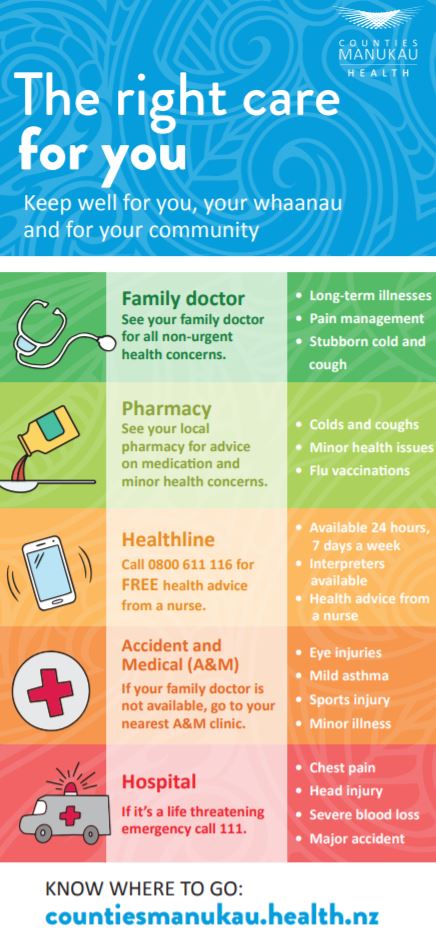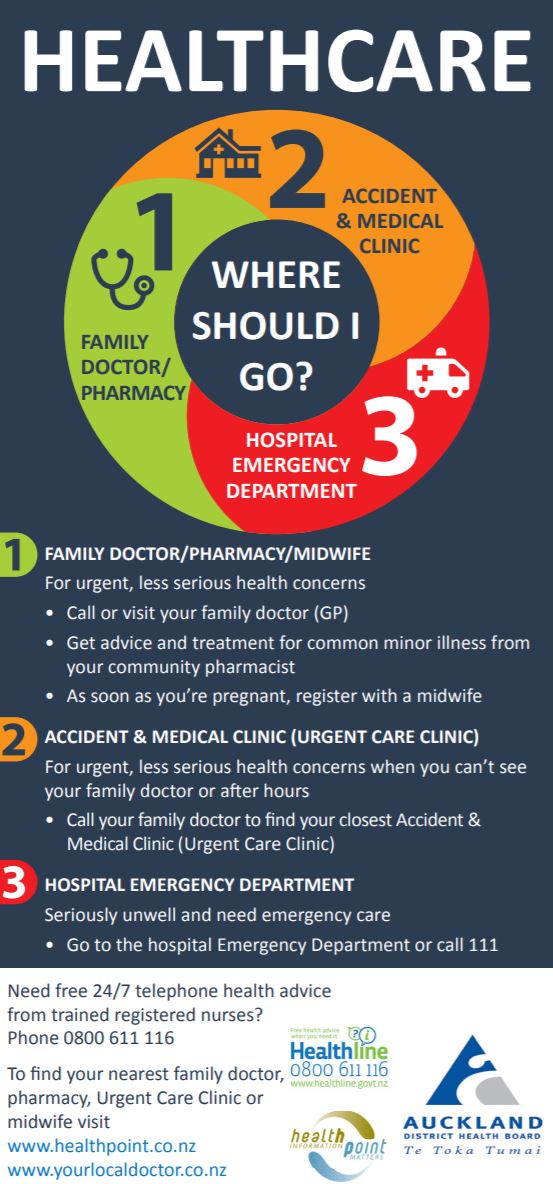Wishing everyone a safe and happy Christmas and New Year – Meri Kirihimete from the Healthify team.
NZ health system
Key points about New Zealand's health system
- This section describes how Aotearoa New Zealand’s health system works so you know how to access help when you need it.
- Healthcare in New Zealand is a mixture of free services and subsidised services (where you pay a fee to cover some of the costs). For example:
- most hospital visits and visits to the family General Practitioner (GP) for children aged under 13 are free
- GP's appointments for other age groups and picking up a prescription from the pharmacy do cost, even with a government subsidy (the government pays part of the cost).

Free and subsidised care is only available to New Zealand residents, with some exceptions for visitors from countries such as the UK and Australia. This is because these countries have reciprocal agreements, which allow New Zealanders to access their healthcare services in a similar way.
Check your eligibility for free or subsidised health services(external link) Health New Zealand | Te Whatu Ora
Reciprocal agreements(external link) Health New Zealand | Te Whatu Ora

Image credit: Healthify He Puna Waiora, NZ
Visits to the GP cost less if you enrol with a medical clinic and continue to visit the same practice each time you need to see the doctor or practice nurse. If you enrol with one clinic, then visit a different one, your visit may cost more. Seeing a GP or picking up a prescription outside usual working hours 8.30am–5pm, Monday to Friday, often costs more as well.
Most family doctors (GPs) operate on an appointment-only basis, but some offer walk-in services. Non-urgent appointments at the hospital can generally only be obtained by a referral from your GP.
You don’t need a referral in an emergency to attend hospital, but if you have attended an after-hours clinic first you may get a referral to speed up your processing once arriving at hospital.
Find out where to get medical help
If you need a blood test, urine test, x-ray, ultrasound or other diagnostic procedure you can access these, most of the time, for free if you have been referred by a GP or midwife. There are some cases where you may have to pay for these tests. Check with your referring health professional about any costs if this is unclear.
In most cases, you won’t have to pay for care after an accident. The Accident Compensation Corporation (ACC) is a Government agency that provides no-fault personal injury cover for all New Zealand residents and visitors to New Zealand. Anyone needing emergency care in a hospital as a result of an accident will be covered by ACC.
ACC may also contribute to a wide range of medical costs associated with accidents, including doctor’s visits, treatment from various other health professionals, surgery, x-rays and prescriptions.
The majority of healthcare services are funded by Health New Zealand | Te Whatu Ora – a government department. Health NZ | Te Whatu Ora provides the bulk of its funding for health services to District Health Boards (DHBs), who in turn divvy up the money between what’s called primary and secondary care.
Services you would encounter in primary care include contact with your family doctor or GP, practice nurse, midwife, Plunket nurse, physiotherapist or podiatrist.
Many of these services are funded, but the funding doesn’t always meet all the cost of providing the service by these private businesses. This means you may be charged what’s called a co-payment or fee for some of these services.
What are primary care services?
Funding for primary care comes from District Health Boards and goes to Primary Health Organisations (PHOs). PHOs are generally charitable trusts and exist in a single area, for example the North Shore of Auckland.
For GP clinics to access the Government funding, they must become a member of a PHO. The amount of funding a PHO and its member GP clinics receive is based on how many patients and the health needs of the people registered. For example, more funding is provided for people living in low socio-economic areas and those with chronic illness like diabetes, asthma or heart disease.
What are secondary care services?
Secondary care services generally include any contact with the hospital – an appointment, visiting the emergency department, surgery or assistance with maintaining your health if you have a chronic illness, like diabetes or kidney disease where you might need regular visits to the hospital for dialysis.
All these services are fully subsidised, or free for New Zealanders.
What about private hospitals?
Private hospital care is available in New Zealand, but at a cost. Generally, only people with insurance or the ability to pay will use a private hospital for procedures, diagnostic tests and surgery.
Many procedures done in a private hospital can also be done in a public hospital, but the difference is there may be a wait of several weeks or months. Care in some private hospitals, for example in rest homes or aged care facilities, are subsidised.
"The New Zealand Health Strategy: Future direction(external link) outlines the high-level direction for New Zealand’s health system over the 10 years from 2016 to 2026. It lays out some of the challenges and opportunities the system faces; describes the future we want, including the culture and values that will underpin this future; and identifies five strategic themes for the changes that will take us toward this future." (Information sourced from the Ministry of Health, 2016).
Download the New Zealand Health Strategy: Future direction (in PDF)(external link) or view it online(external link)
New Zealand Health System(external link) Ministry of Health NZ
About ACC(external link) ACC NZ
Check your eligibility for free or subsidised health services(external link) Health New Zealand | Te Whatu Ora
Reciprocal agreements(external link) Health New Zealand | Te Whatu Ora, 2011
Directory of services in English(external link), Chinese(external link) and Korean(external link) Your local doctor
Resources
The New Zealand Health System. Auckland & Waitematā District Health Boards (June 2022) English(external link), Chinese (simplified)(external link), Korean(external link), Hindi(external link), Burmese(external link), Japanese(external link), Arabic(external link), Vietnamese(external link), Portuguese(external link), Spanish(external link)
The right care for you. Counties Manukau Health, NZ, 2020 English(external link), Chinese(external link), Cook Islands Māori(external link), Hindi(external link), te reo Māori(external link), Samoan(external link), Tongan(external link)
Your Local Doctor & Auckland DHB, NZ Amharic(external link), Arabic(external link), Burmese(external link), English(external link), Farsi(external link), Hindi(external link), Japanese(external link), Khmer(external link), Korean(external link), Portugese(external link), Punjabi(external link), Russian(external link), Chinese (simplified)(external link), Somali(external link), Spanish(external link), Swahili(external link), Tamil(external link), Thai(external link), Tigrinya(external link), Vietnamese(external link), Urdu(external link)
Brochures

Auckland & Waitematā District Health Boards (June 2022)
Arabic, Burmese, English, Hindi, Korean, Portugese, Chinese (simplified), Spanish, Vietnamese
Counties Manukau Health, NZ, 2020
English, Chinese, Cook Islands Māori, Hindi, te reo Māori, Samoan, Tongan
Credits: Healthify Editorial Team. Healthify is brought to you by Health Navigator Charitable Trust.
Page last updated:






